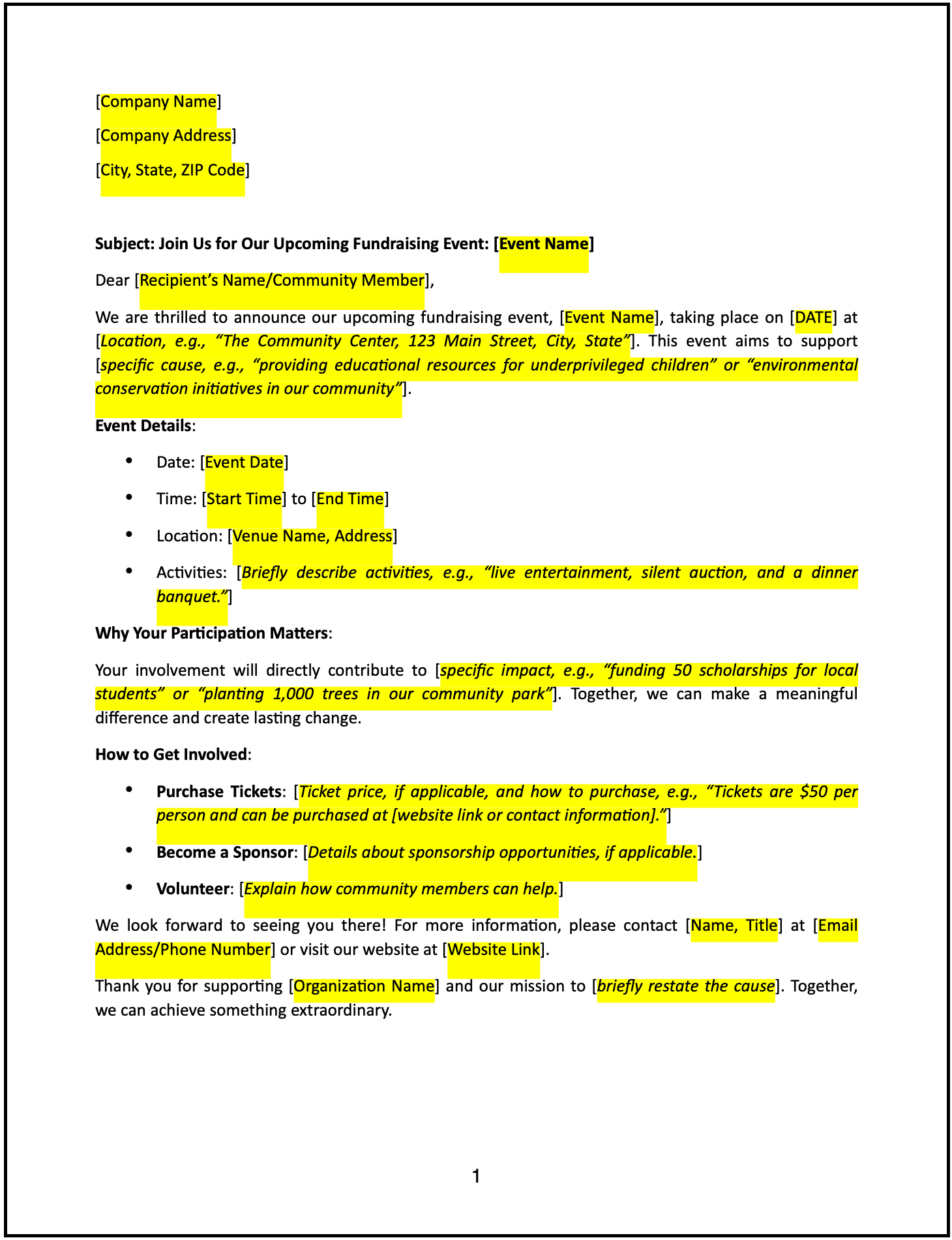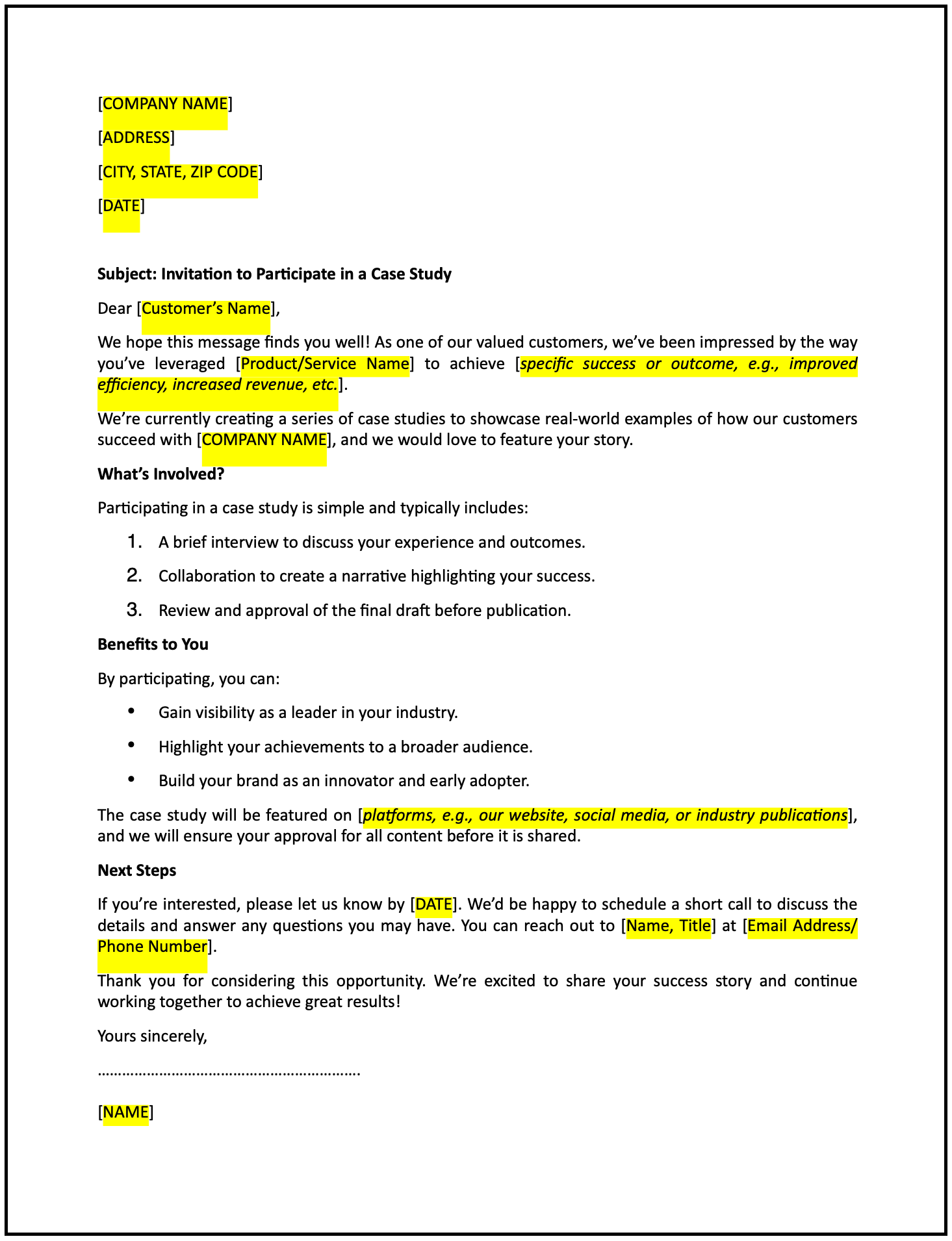Letter of upcoming regulatory changes to stakeholders: Free template

Letter of upcoming regulatory changes to stakeholders
Keeping stakeholders informed about upcoming regulatory changes is essential for maintaining trust, ensuring compliance, and preparing for potential impacts. This letter provides a professional way to communicate new or updated regulations, explain their relevance, and outline the steps your organization is taking to address them.
How to use this letter of upcoming regulatory changes to stakeholders
- Identify the regulatory changes: Clearly outline the upcoming changes, including the regulation or standard being updated, the effective date, and the specific areas impacted.
- Customize the template: Replace placeholders with your organization’s details, the relevant regulatory changes, and how they affect your operations or stakeholders.
- Explain the impact: Provide a clear and concise explanation of how the changes may affect stakeholders, such as operational adjustments, compliance requirements, or potential risks.
- Highlight your response plan: Share the steps your organization is taking to adapt to the changes, including timelines, resources, or support available to stakeholders.
- Maintain a professional tone: Ensure the letter is respectful, factual, and focused on collaboration and preparedness.
- Share resources or next steps: Offer links to relevant regulatory documents, additional resources, or contact details for further questions or support.
Benefits of using a letter of upcoming regulatory changes to stakeholders
This letter template ensures stakeholders are informed about regulatory changes in a clear and professional manner. Here’s how it helps:
- Build trust: Proactively communicating changes demonstrates your organization’s transparency and commitment to stakeholder relationships.
- Minimize confusion: By explaining the changes and their impact, this letter reduces uncertainty and helps stakeholders understand what’s required.
- Showcase preparedness: Outlining your response plan highlights your organization’s readiness to adapt and ensures stakeholders feel supported.
- Support compliance: Sharing relevant information and resources helps stakeholders meet their own compliance obligations effectively.
- Enhance collaboration: This letter fosters a collaborative approach to addressing regulatory changes, reinforcing your organization’s role as a reliable partner.
Tips for writing an effective letter of upcoming regulatory changes to stakeholders
- Be clear and concise: Clearly describe the changes, their effective date, and the areas they impact, avoiding unnecessary jargon or technical language.
- Focus on the impact: Explain how the changes may affect stakeholders and what actions they may need to take.
- Provide a plan: Share the steps your organization is taking to adapt to the changes and how you’re supporting stakeholders in the process.
- Use professional language: Maintain a respectful and factual tone, emphasizing your commitment to transparency and collaboration.
- Offer additional resources: Include links or contact details for stakeholders who may need further information or assistance.
Frequently asked questions (FAQs)
Q: What types of regulatory changes can this letter address?
A: This letter can be used for any upcoming regulatory change, including new laws, amendments to existing regulations, or updates to industry standards.
Q: Should I include supporting documentation with this letter?
A: Yes, attaching links to regulatory documents, summaries of the changes, or guidance materials can help stakeholders understand the updates better.
Q: Who should receive this letter?
A: Send this letter to stakeholders directly affected by the changes, such as clients, partners, vendors, or internal teams.
Q: How detailed should the explanation of the changes be?
A: Provide enough detail to ensure stakeholders understand the changes and their impact, but avoid overwhelming them with unnecessary complexity.
Q: Do I need to consult legal or compliance experts before sending this letter?
A: Yes, consulting with experts ensures your explanation of the changes is accurate and aligned with the regulatory intent.
Q: What tone should the letter use?
A: The tone should be professional, transparent, and supportive, emphasizing collaboration and readiness to address the changes.
Q: When should this letter be sent?
A: Send the letter well in advance of the regulatory changes taking effect to give stakeholders enough time to prepare.
This article contains general legal information and does not contain legal advice. Cobrief is not a law firm or a substitute for an attorney or law firm. The law is complex and changes often. For legal advice, please ask a lawyer.


